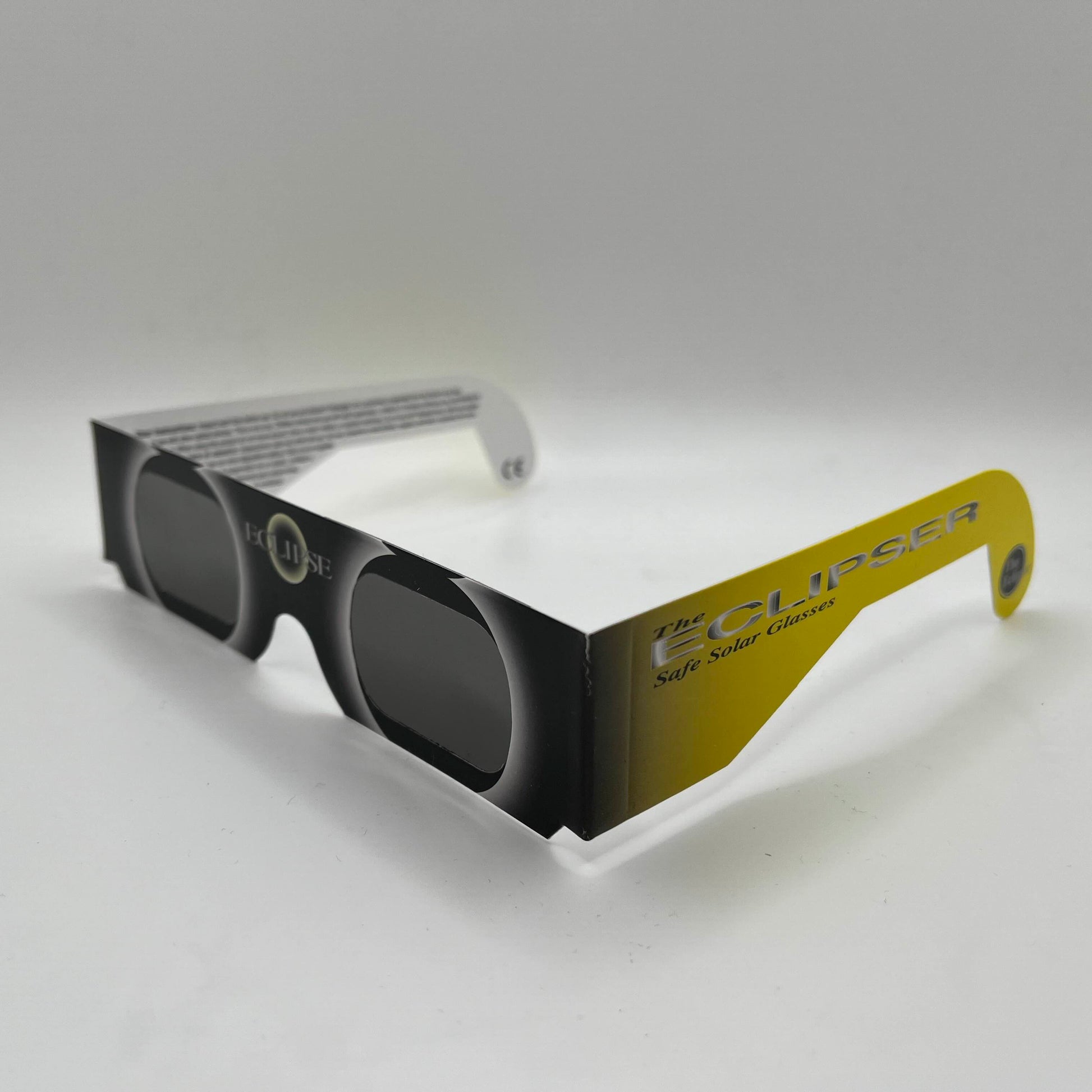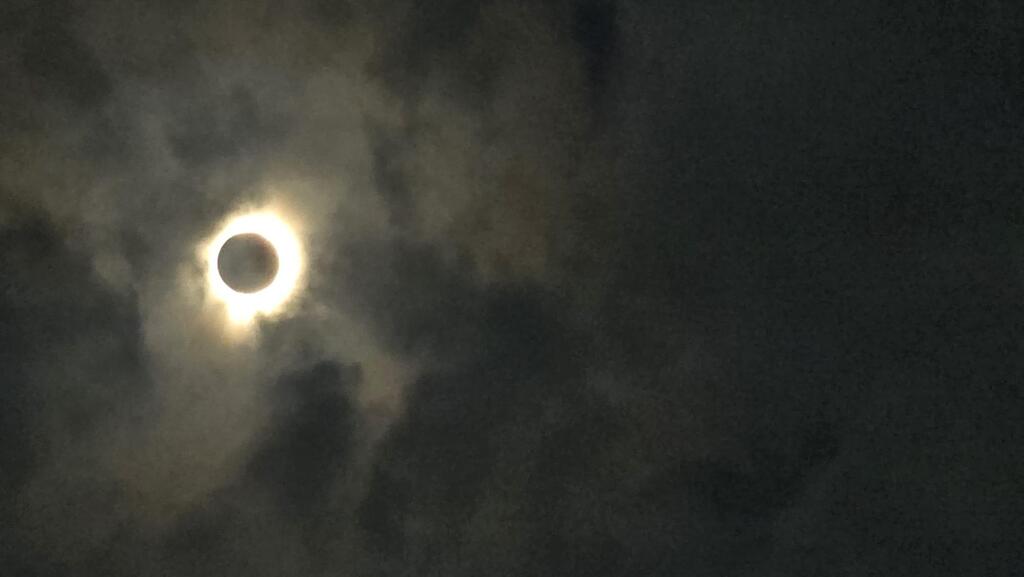
American Paper Optics
Solar Eclipse Glasses
Buying for a group? See our bulk discounts.
- Shows sun in natural orange
 Blocks UV rays
Blocks UV rays
- Fits most sizes and eyewear
- Made in USA
- Safe supplier
- ISO Tested
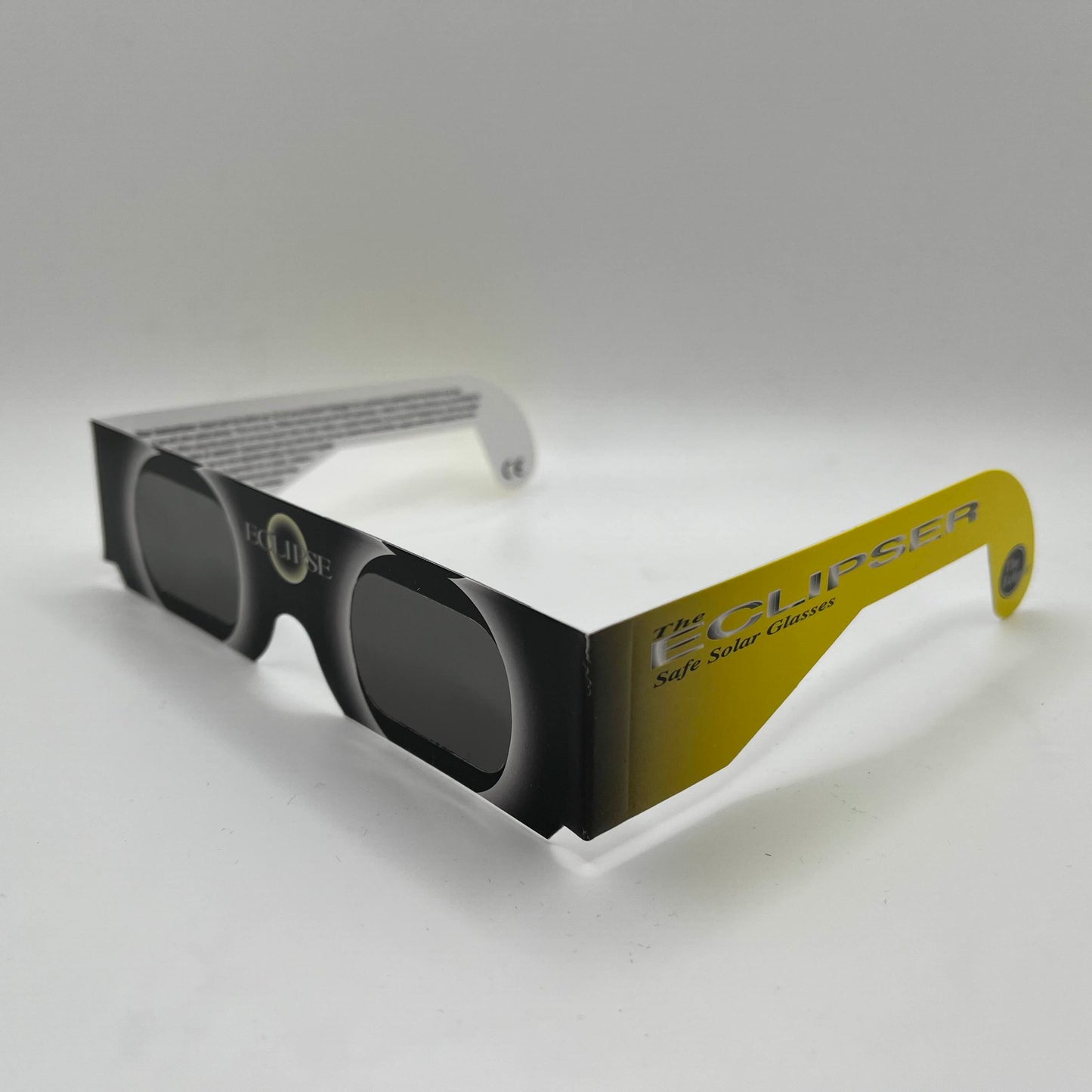
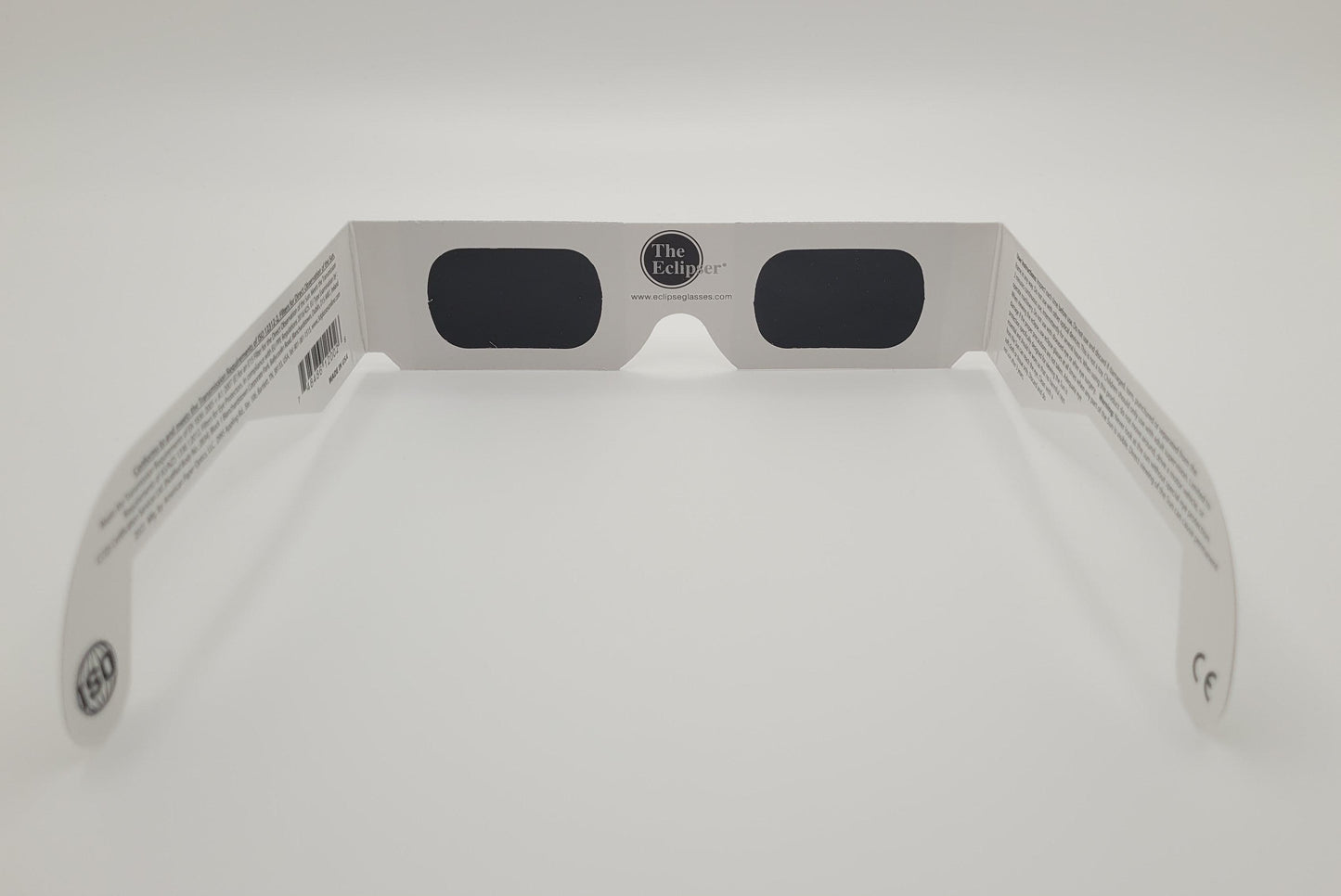
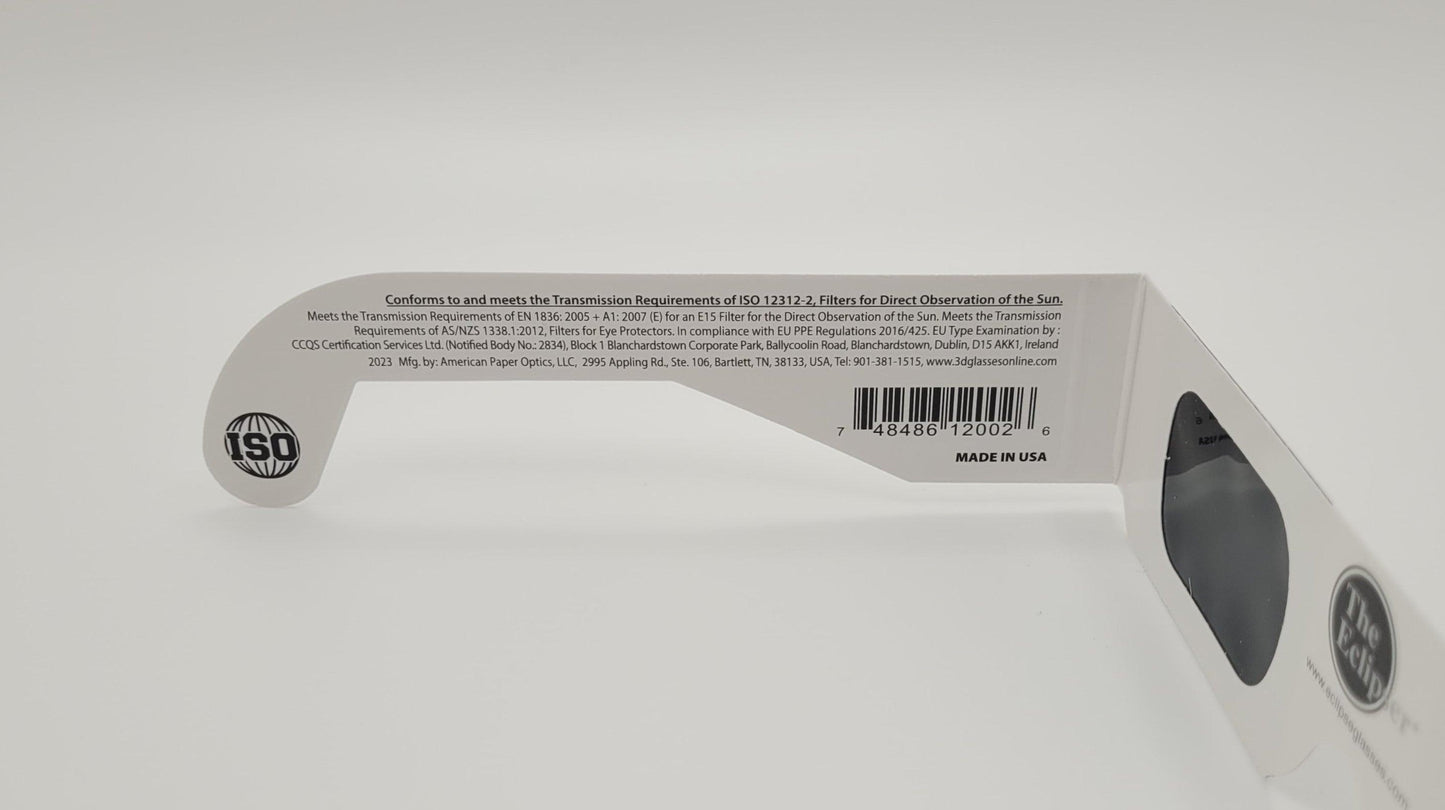
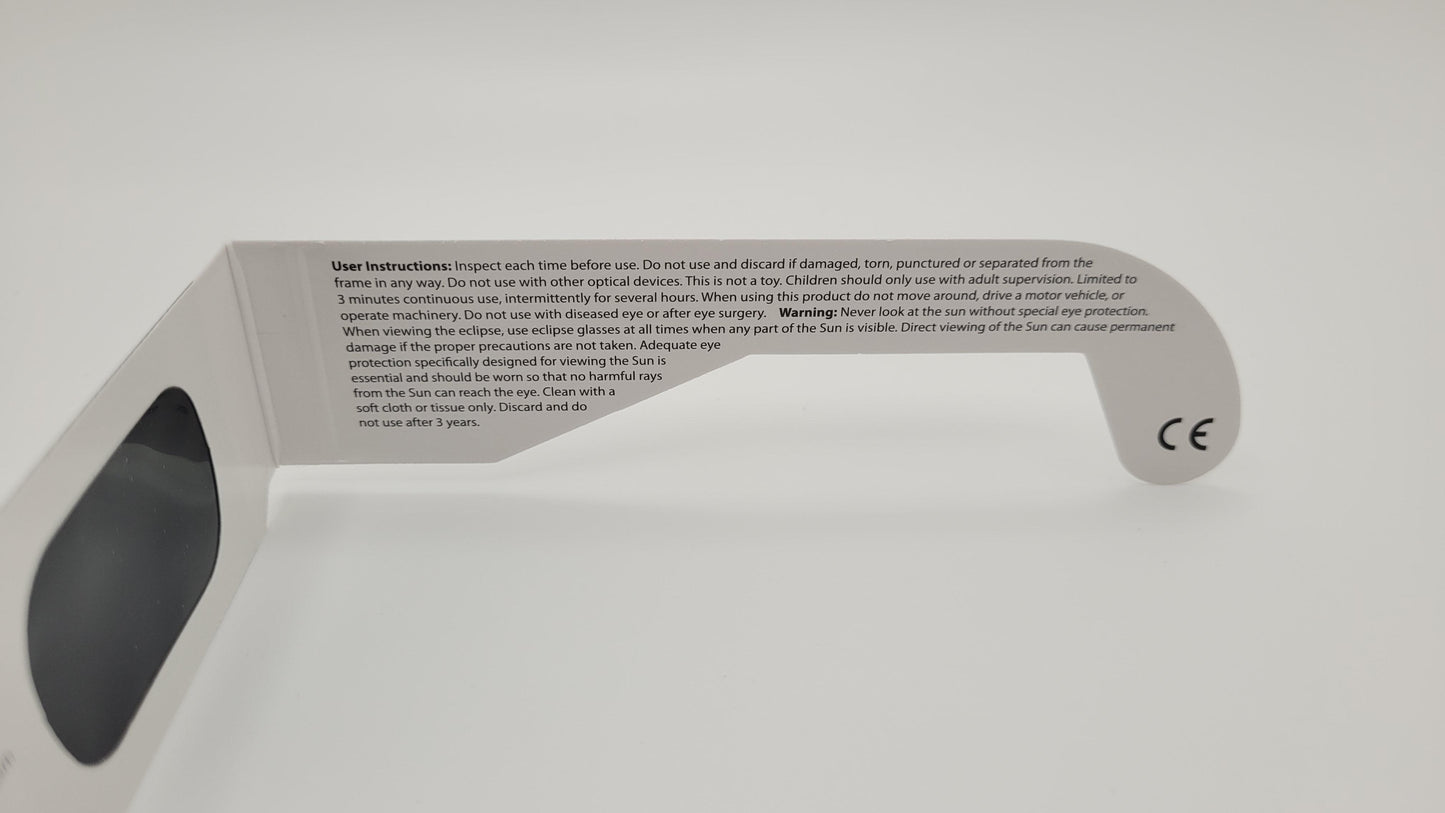

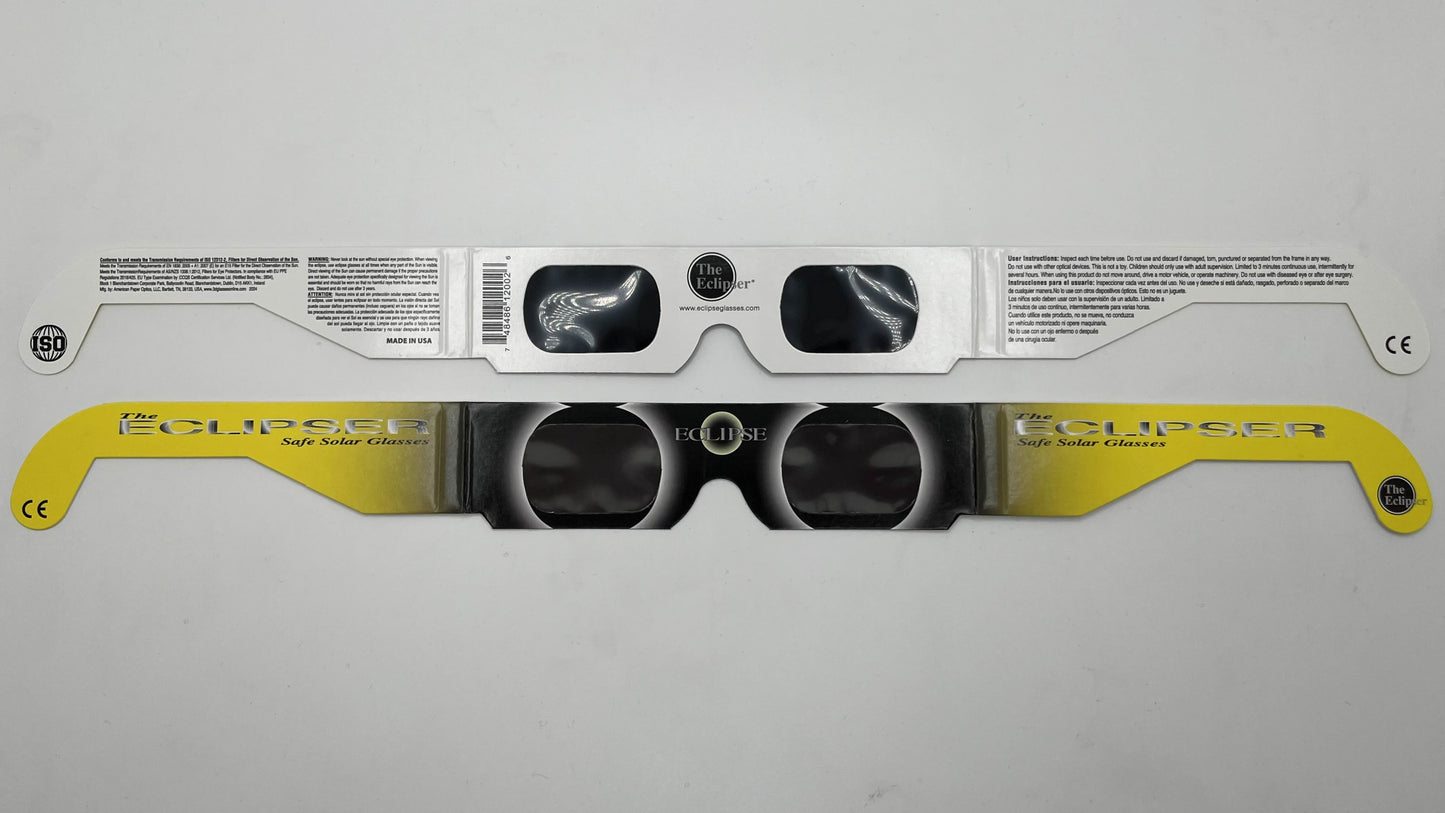
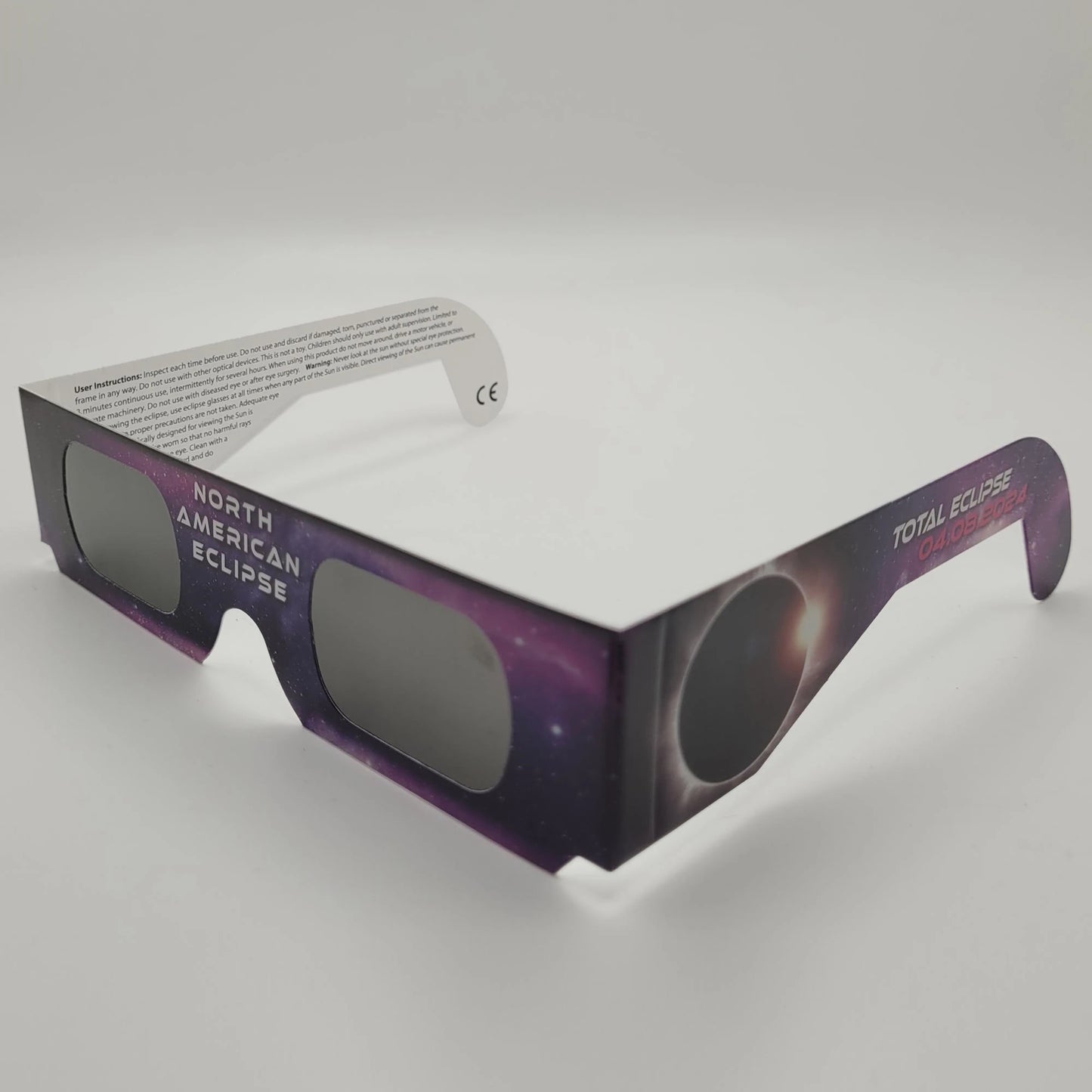


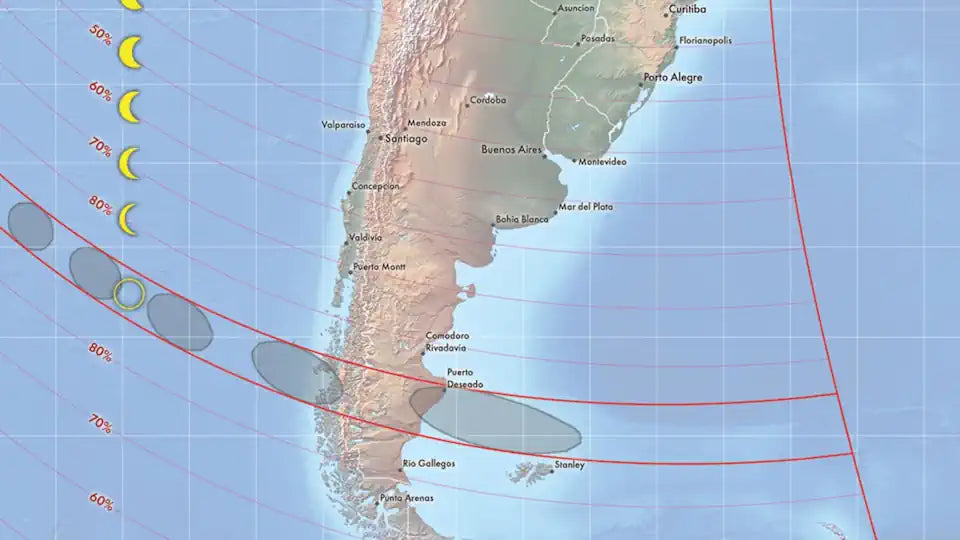
Are you in the path?
Remind me for the next eclipse
Be the first to know about new events and exclusive offers.

Eclipse photos
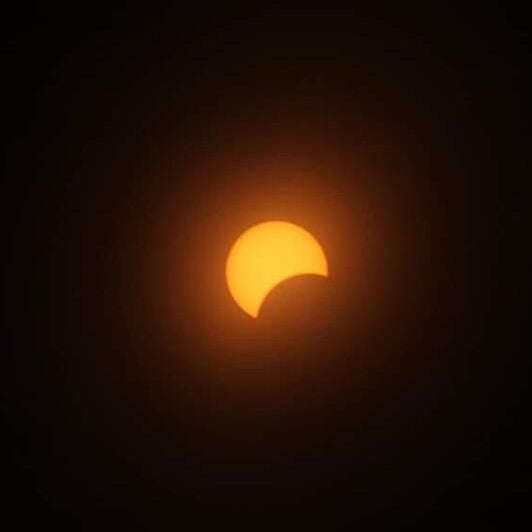
Eclipse photos
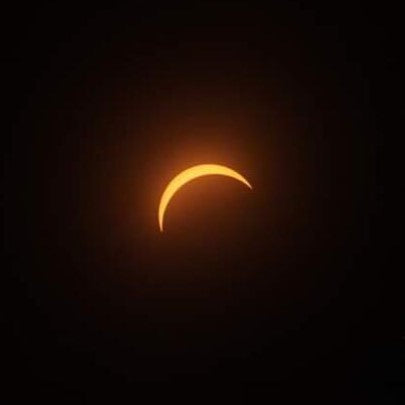
Eclipse photos

Eclipse photos
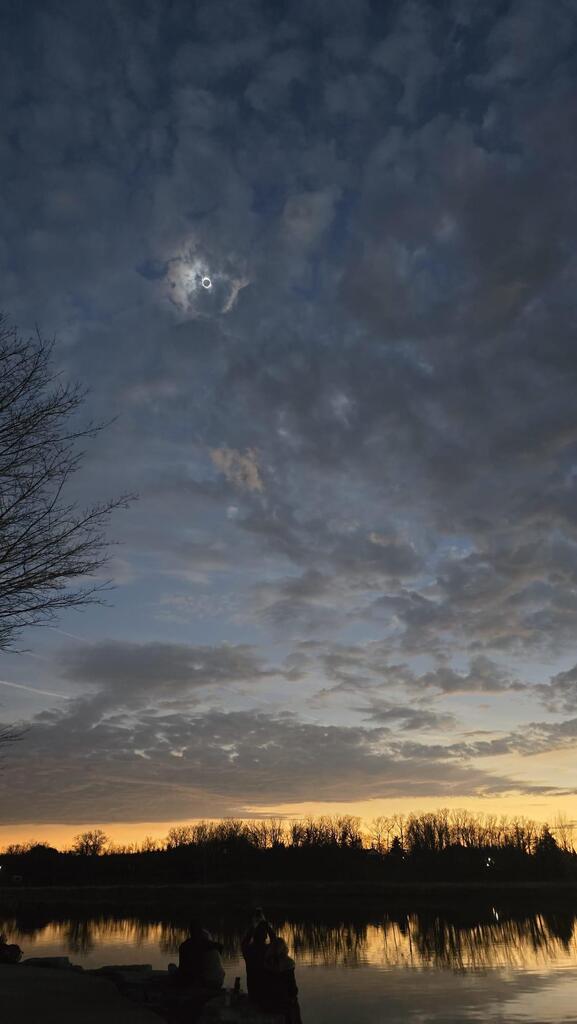
Eclipse photos
Solar eclipse FAQ
What is a solar eclipse?
A solar eclipse occurs when the moon aligns with the sun. Depending on the alignment, there may be a total eclipse, partial eclipse, or annular (ring of fire) eclipse.
When is the next eclipse?
The next eclipse will be an annular eclipse on October 2nd, 2024. After that, there will be a partial eclipse over Eastern Canada in March 2025. The exact time of day varies by location - check a map.
Where is the next eclipse? | October 2 2024 Solar Eclipse Map
The October 2nd 2024 eclipse starts over the Pacific Ocean, including Rapa Nui. It then crosses the southern territories of Chile and Argentina. Then it will pass just North of Islas Malvinas.
Can I still see it if I'm outside its path?
Outside this path, you will see a partial eclipse across the southern continent. The sky won't go dark, but the moon will still cover part of the sun and take a "bite" out of it.

Why do I need eclipse glasses? Can I use regular sunglasses instead?
Even a small visible portion of the sun can damage your eyes if you look at it too long.
The sun emits ultraviolent and infrared light. Your eyeball acts like a magnifying glass, causing burns that can lead to blindness if you are not careful.
Proper solar viewers can protect your eyes. Regular sunglasses do not filter the right type of light to be effective and do not meet the ISO 12312-2 standard for looking at the sun.
Other safe methods exist, but with subpar quality:
- Welding goggles give the sun an unusual green tint.
- Mylar produces a cold blue tint. Poorly made sheets may have pinholes that let light in.
- PInhole projectors that project an image of the eclipse onto a wall do not show the same amount of detail or colors that you can see when looking at the sun directly (with proper equipment).
For a sharp image of the sun in a pleasing yellow-orange color, we recommend using solar eclipse glasses.
How do eclipse glasses work? What are they made of?
Our glasses use a silver-black polymer film made by Thousand Oaks Optical, a US-based company. They have a metallic coating outside surface and an absorptive material within the substrate, blocking 99.999% of incoming light energy from entering the instrument.
Can I take eclipse photos with solar filters?
Absolutely! The maker of the filters (Thousand Oaks Optical) states their silver-black polymer filter is ideal for visual and photographic use up to 100x magnification.
Just make sure to place the filter first in line to block the sun, so you aren't magnifying an unfiltered stream of light into your eyes or your camera. Ensure the filter is properly attached so it won't fall off or have any gaps that let light enter.
The American Academy of Ophthalmology has posted a guide on safely photographing eclipses, linked here.
Can I use eclipse glasses with my prescription glasses?
Yes. You can wear both at the same time. Just make sure to place the eclipse viewers in front of your glasses. This is so they can filter the sun before it enters your glasses, protecting your vision from magnified UV/IR rays.
Depending on the size of your glasses, they can worn at the same time over your existing pair, attached with tape, or held in place with a spare hand.
Are eclipse glasses safe? | Solar Eclipse Glasses Certification
Our glasses are safe for direct solar viewing. They are ISO 12312-2:2015 compliant and CE certified).
We only use glasses made in the USA by American Paper Optics, a company recognized by the American Astronomical Society's Solar Eclipse Task Force as a supplier of safe solar viewers and listed on the latter's website. As we buy from American Paper Optics, we are also recognized by the American Astronomical Society as a safe supplier of solar viewers.
The ISO and CE testing was performed by ICS laboratories, a US company.
The information below can be found on each pair of glasses, printed on the backside.
...
Meets the Transmission Requirements of EN 1836: 2005 + A1: 2007 (E) for an E15 Filter for the Direct Observation of the Sun.
Meets the Transmission Requirements of AS/NZS 1338:1:2012, Filters for Eye Protectors.
In compliance with EU PPE Regulations 2016/425. EU Type Examination by : CCQS Certification Services Ltd. (Notified body No.: 2834). Block 1 Blanchardstown Corporate Park, Ballycoolin Road, Blanchardstown, Dublin, D15 AKK1, Ireland.
Mfg. by: American Paper Optics, LLC, 2995 Appling Rd., Ste. 106, Bartlett, TN, 38133, USA, Tel: 901-381-1515, www.3dglassesonline.com
...
The information above can be found on each pair of glasses, printed on the backside.
A copy of the lab test report from ICS Laboratories assessing the glasses can be provided upon request. We can also provide samples and/or manufacturer invoices if you prefer to verify them yourself. Contact us if you have any questions.
Excellent protective glasses that worked great for the eclipse.
Worked perfectly
Very informative and worked well! Fast shipping
Great quality, great company and great customer service! We placed a large order for our workplace ahead of the April 2024 solar eclipse and it was a seamless experience from our initial inquiry to delivery. Highly recommend!
Came in great time but never got to use them as it was to cloudy to see anything where I am so was disappointed
